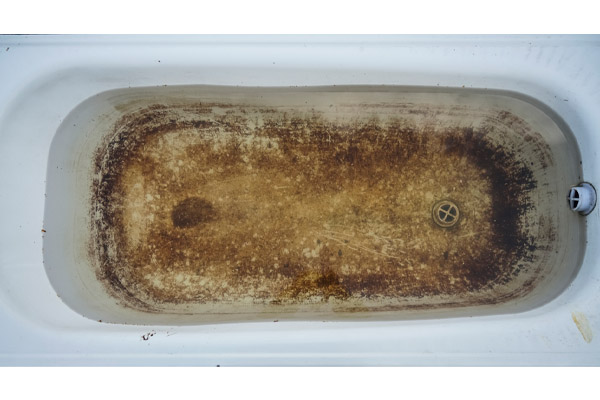The Definitive Answer: Sewage Coming Up Through the Bathtub
The Definitive Answer: Sewage Coming Up Through the Bathtub
Blog Article
What are your insights and beliefs about What to Do if Sewage Starts Coming Up Through Your Bathtub?

Sewer backup in the tub can be a stressful and unsanitary problem for any property owner. Not only is it troublesome, however it also poses serious health and wellness risks and shows underlying issues with the plumbing system. Comprehending why sewer is coming up with the tub is vital for taking proper activity to deal with the trouble successfully.
Introduction to the Issue
Usual Factors for Sewer Backup
Blockages in the Drain Line
Among one of the most common sources of sewage backup is a clog in the drain line. This can happen because of the build-up of particles, oil, or foreign items in the pipelines, stopping appropriate flow and triggering sewage to support into your bathtub.
Tree Root Invasion
Tree origins seeking wetness and nutrients can penetrate sewage system lines with small cracks or joints. With time, these roots can expand and broaden, causing significant damage to the pipes and causing sewage backup problems.
Recognizing the Issue
When sewage draws back up into the bath tub, it's a clear indicator of a trouble with the drain system. The wastewater that needs to be moving far from your home is instead locating its way back into your living space, which can bring about substantial damages and health hazards.
Prospective Reasons
Several variables can contribute to sewage backup in the bath tub. From clogs in the sewage system line to concerns with the plumbing infrastructure, identifying the root cause is essential for discovering a remedy.
Aging Framework
Older homes may have obsoleted plumbing systems that are much more vulnerable to rust, splits, and deterioration. As pipes age, they come to be more prone to leakages and clogs, raising the likelihood of sewer back-up cases.
Heavy Rainfall or Flooding
During durations of heavy rainfall or flooding, the sewer system may end up being overloaded with excess water, causing backups and overflows. This can lead to sewage supporting into tubs and other fixtures inside the home.
Indicators of Sewer Backup
Foul Odors
Unpleasant smells rising from drains or components, especially in the shower room, might show sewage backup concerns. These odors are typically strong and relentless, signaling an issue that needs immediate attention.
Slow Draining Fixtures
Tubs, sinks, and bathrooms that drain pipes gradually or not in any way could be experiencing sewer backup. If numerous fixtures are influenced simultaneously, it's likely that the concern stems from a typical factor, such as the main sewage system line.
Gurgling Noises
Strange gurgling or bubbling noises originating from drains pipes when water is running in other places in your house are a measure of air trapped in the plumbing system. This air buildup can arise from sewage back-up and need to be investigated quickly.
Health And Wellness Threats Related To Sewage Back-up
Contamination of Water
Sewer back-up can contaminate the water system in your home, posturing a severe wellness danger to you and your household. Direct exposure to contaminated water can lead to stomach issues, skin infections, and various other diseases.
Mold and mildew Development
Wetness from sewer backup can create suitable conditions for mold development in your home. Mold spores can aggravate respiratory system issues and trigger allergic reactions in delicate people, making timely clean-up important.
Spread of Illness
Sewage has unsafe bacteria, viruses, and bloodsuckers that can create a variety of illness, including liver disease, cholera, and gastroenteritis. Entering contact with sewer or contaminated surface areas places you in danger of infection.
Cleaning Up After Sewer Backup
Disinfection Procedures
Completely sanitize and sterilize impacted locations after sewer back-up to eliminate hazardous germs and avoid mold and mildew development. Use ideal cleansing items and safety gear to guarantee secure and reliable clean-up.
Remediation of Affected Locations
Fix any type of damages to floor covering, wall surfaces, or components triggered by sewage back-up. Depending on the extent of the damage, you might need to change carpeting, drywall, or various other products to recover your home to its pre-loss problem.
Immediate Actions to Take
Turning Off Water
In case of sewer backup, it's important to shut off the water to stop more contamination and damages. Find the primary water shutoff valve in your house and shut it off up until the issue can be solved.
Contacting a Specialist Plumber
Dealing with sewage back-up is not a do it yourself work. Get in touch with an accredited plumber with experience in handling sewage-related issues to evaluate the situation and execute needed repair work or cleanings.
Avoiding Contact with Contaminated Water
Till the sewer back-up is dealt with, stay clear of contact with polluted water to avoid the spread of bacteria and pathogens. Wear protective gear if you should be in the afflicted location and clean your hands thoroughly later.
Safety nets
Normal Maintenance of Drain Lines
Schedule routine examinations and maintenance of your drain lines to recognize and deal with prospective problems prior to they escalate into significant issues. This can include cleaning debris, inspecting for tree root invasion, and fixing any broken pipelines.
Installing Bayou Shutoffs
Take into consideration setting up backwater valves in your plumbing system to stop sewer from flowing back right into your home during durations of heavy rainfall or flooding. These valves instantly close when water draws back up, shielding your property from contamination.
Appropriate Disposal of House Waste
Prevent purging anything aside from bathroom tissue and human waste down the bathroom to stop clogs and clogs in the sewage system line. Dispose of grease, oil, and other household chemicals appropriately to decrease the danger of plumbing issues.
Why Is Water Backing Up in My Bathtub When I Flush My Toilet?
What to do about a sewer line clog
First, don’t bother with plunging. No amount of plunging will dislodge the clog in a sewer line. The clog is too far away. Plungers are for clogs in the toilet itself, not the sewer line. Plus, the most likely causes of a sewer clog are:
Tree roots Flushed toys or feminine products Grease buildup Those items don’t move easily. And in the case of tree roots, the roots need to be cut out of the pipe and the pipe will need to be repaired.
You’ll need a closet auger. A closet auger is a type of plumber’s snake with a protective cover to keep from scratching the delicate porcelain toilet. If the clog is further down, you may need to remove the toilet or use one of your cleanouts to get to the clog.
We also recommend doing a video inspection of the drain to ensure that the cause of the clog has been completely removed. Otherwise, you could have the same problem again in a few days or weeks.
https://mspplumbingheatingair.com/blog/why-is-water-backing-up-in-my-bathtub-when-i-flush-my-toilet

Hopefully you enjoyed our article about What To Do If Sewage Starts Backing Up Into the Shower. Thanks a ton for spending some time to read our piece of content. Sharing is caring. Helping others is fun. I treasure reading our article about What to Do if Sewage Starts Coming Up Through Your Bathtub.
Get A Free Estimate
Report this page